
Make your garden better than ever
Our product tests & advice help you get the garden you want. Subscribe to Which? Gardening for only £4.99 a month or £49 a year.
Get monthly expert adviceCancel anytime
By clicking a retailer link you consent to third-party cookies that track your onward journey. This enables W? to receive an affiliate commission if you make a purchase, which supports our mission to be the UK's consumer champion.

A greenhouse is a major investment for your garden and one that’s not easy to move or replace once installed, so it's important to pick the right one for your needs.
Whether you're shopping for a small greenhouse to protect young plants or a larger alternative to work on fruit and veg, our expert guide can help. We share details on optimal materials and sizes, features to look out for, greenhouse accessories and heaters.
Keep scrolling for an overview of popular greenhouse types, plus our top tips on how to build a greenhouse for yourself.
Pros: Let in light from all sides, lots of choice, often roomy enough to work in
Cons: Can lose heat as all sides are exposed, you'll have to find a way to get power to them

Freestanding greenhouses are often made from wood, aluminium or PVC. They're usually square or rectangular with an apex roof.
Most gardeners will choose a 6 x 8ft (1.8 x 2.4m) or 8 x 10ft (2.4 x 3m) model. To help you determine the right size, think about freedom of movement and what you plan to grow – you might need double doors to move plants in and out, for example.
Freestanding greenhouses allow light in from all four sides, although this means they're more exposed to the elements compared with other types. You can install bubble insulation if needed. As these greenhouses can be quite large, you might also want to run electricity to the space so you can see in low light.
When deciding where to position your freestanding greenhouse, consider which parts of your garden get plenty of sunshine. You also need to think about the impact of strong gusts of wind and whether it will be well protected.
Pros: Wind resistant, maximise unused space, can be particularly energy efficient
Cons: Not as much space to plant a variety of crops, fewer sides for light to enter

Lean-to greenhouses join to an existing structure, such as a house or garage (shown above), so won't be exposed to the elements from every angle.
These are a popular choice among gardeners with limited space or those who want a greenhouse closer to their home. This means you won't need to run water and electricity across the full length of the garden.
Lean-to greenhouses are often made from wood, although this needs to be maintained over the years, making aluminium a tempting alternative. The initial purchase cost is similar to a freestanding model, but a lean-to takes up less space and you only need access around three sides. They're also cheaper and easier to keep warm.
Pros: Space-saving, cheaper than a full-sized greenhouse, most can be stowed away
Cons: Can be difficult to tend to plants if you have limited mobility, limited growing space

A mini greenhouse is like a glazed cupboard with shelves that sits on a patio or under a window, using a house wall or garage as protection – perfect if space is limited. It will protect trays or pots of young plants from late frosts in spring and encourage borderline crops such as peppers to ripen.
Ideally, a mini greenhouse should face east or west. South-facing ones overheat in spring or summer unless shaded, and north-facing ones suit only shade-loving plants.
Mini greenhouses are generally easy to set up and maintain, making them well suited to both newbies and experienced gardeners. Some have built-in grow lights, and many models can be dismantled and repositioned (or stored away) when needed.
We've used greenhouses to trial a selection of tomato varieties – see the full results with our guide on how to grow tomatoes and the best varieties.

Our product tests & advice help you get the garden you want. Subscribe to Which? Gardening for only £4.99 a month or £49 a year.
Get monthly expert adviceCancel anytime
Most greenhouse frames are made of aluminium. Wooden greenhouses are also available, though, and many gardeners find them more attractive to look at. However, they need more maintenance compared with metal frames.
Pros: Budget-friendly, durable, plain silver is maintenance-free, light and easy to assemble
Cons: Fastenings needed to attach shading material, tricky to extend, insulation can be poor, usually need to add your own base

Aluminium is the most common material for greenhouses, which means you’ll be spoilt for choice. These models are available in a variety of shapes and sizes, so you'll have some options that suit your budget.
Generally speaking, aluminium greenhouses are considered low maintenance as they're able to withstand harsh weather. Aluminium won't warp or crack over time, and the material is rust-resistant. A lightweight metal construction also ensures the greenhouse is easy to move or dismantle.
Pros: Can stain to a specific colour, easy to attach shading material, better insulation
Cons: Can be expensive, usually need to add your own base (keeping the wooden frame off the damp ground), vulnerable to rot, need regular maintenance

Wooden greenhouses are less common and typically cost more than their aluminium counterparts. It's important to pick the right type of wood. Avoid softwoods, such as deal (pine), which are vulnerable to rot – even if the timber has been treated.
Wood is a natural insulator, so it should retain heat fairly well in winter. You can add additional insulation panels to your wooden greenhouse if needed.
Naturally durable timber – usually western red cedar – can be left to age to a silver-brown. For looks, a western red cedar greenhouse is hard to beat. Look for manufacturers that offer a guarantee against rot.
For gardeners working with a limited budget, be aware that you'll usually need to add your own base to a wooden greenhouse.
If you think you'd benefit from adding a shed to your garden, consult our in-depth guide on how to buy the best shed.
Glass is the main glazing material used in greenhouses, hence the alternative name ‘glasshouse’. Horticultural glass is inexpensive and easily replaced, but if you're concerned about breakages or safety, you can opt for a plastic greenhouse.
Plastic greenhouses have twin-walled polycarbonate sheets. Polycarbonate greenhouses let in sufficient light for plant growth initially but, over the years, they can become cloudy and age poorly. Toughened glass is a better option, particularly if the greenhouse is on show.

Toughened or safety glass is stronger than horticultural glass and, if it does break, the resulting pieces are not as sharp. Choosing this option adds about £200 to the cost of a small greenhouse.
Another option is a self-adhesive safety film – this is a transparent film applied to horticultural glass. If the glass is subsequently broken, the film holds the fragments together. However, as the film doesn't reduce breakages, it could end up being more expensive than choosing toughened glass from the start.
To find out which products will leave your plants looking good throughout the summer, see our guide to the best controlled-release fertilisers.
If you're looking to keep costs down, the cheapest option will be a smaller, aluminium model. You can expect to spend around £200, although prices can rise depending on the quality of the materials used.
Greenhouses on sale for less than £200 are often classed as a 'mini greenhouse' or a 'cold frame greenhouse'. Both are easy to move to a spot in your garden that's well suited for growing specific plants. Models that allow varying levels of ventilation are popular, as are cold frames that you can set up on gravel or paved areas.
Larger, wooden structures and greenhouses with ready-made shelving and additional accessories can cost anywhere between £1,000 and £4,000.

Both generalist retailers and dedicated garden shops offer a wide range of greenhouses. To make sure you're buying a greenhouse that's safe to use, only shop with trusted sellers online or in-store.
Ideally, you'd get to see the greenhouse in-store before buying. If this isn’t an option, find out as much information about it as possible before parting with your money.
Popular online retailers that sell greenhouses include:
See which retailers are rated highly with our guide on the best furniture, homeware and DIY shops.
Below, we've selected a range of greenhouses based on search popularity. We've then applied our expert buying knowledge, only showing you products from legitimate brands and retailers. Please note that we have not tested any of these products.
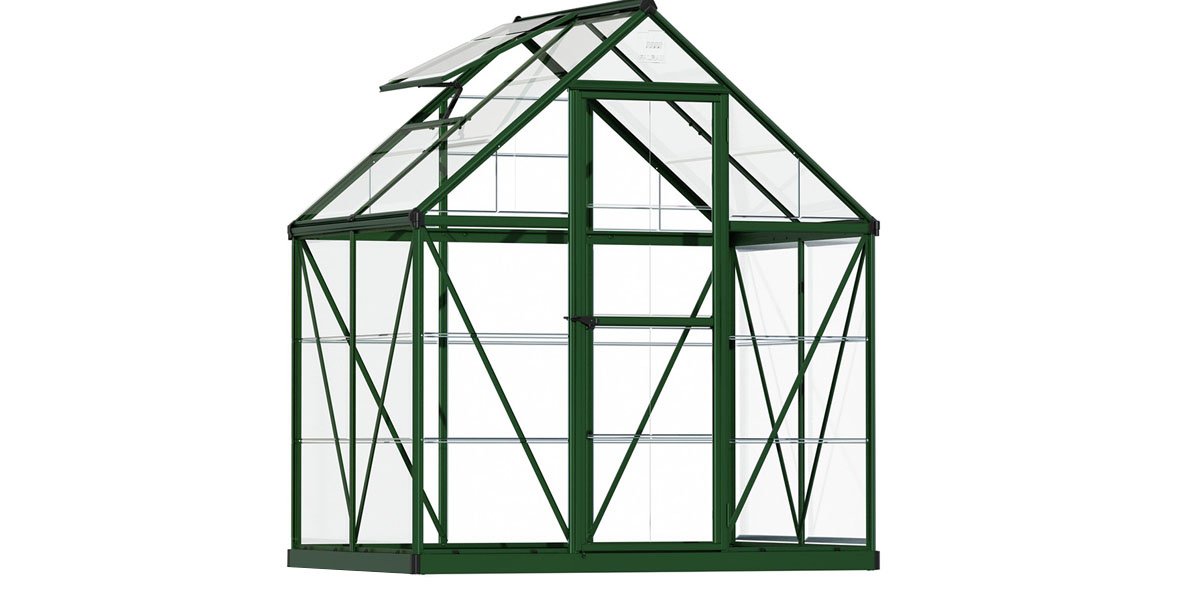
This classic-style greenhouse has polycarbonate panel windows, a steel base, roof vent and guttering. Fitting instructions are included, but fixings are sold separately.
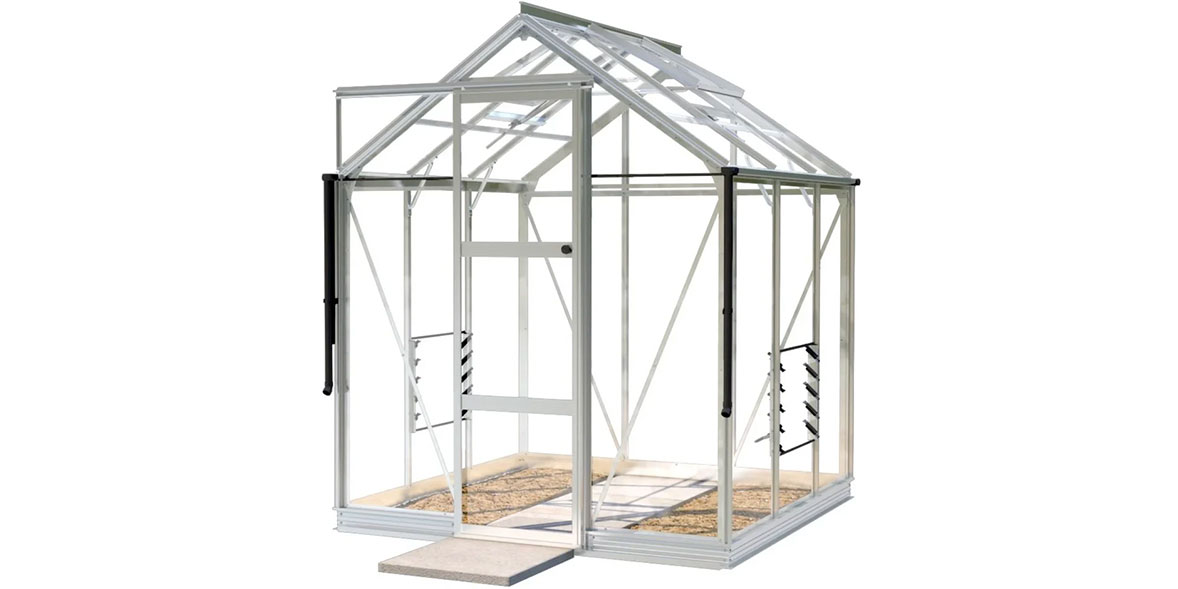
This Rhino greenhouse comes with a 25-year guarantee. It has two single roof vents and automatic vent openers, a large single door, gutters and downpipes, and hanging basket rails.
Available from Greenhouses Direct (£1,599)
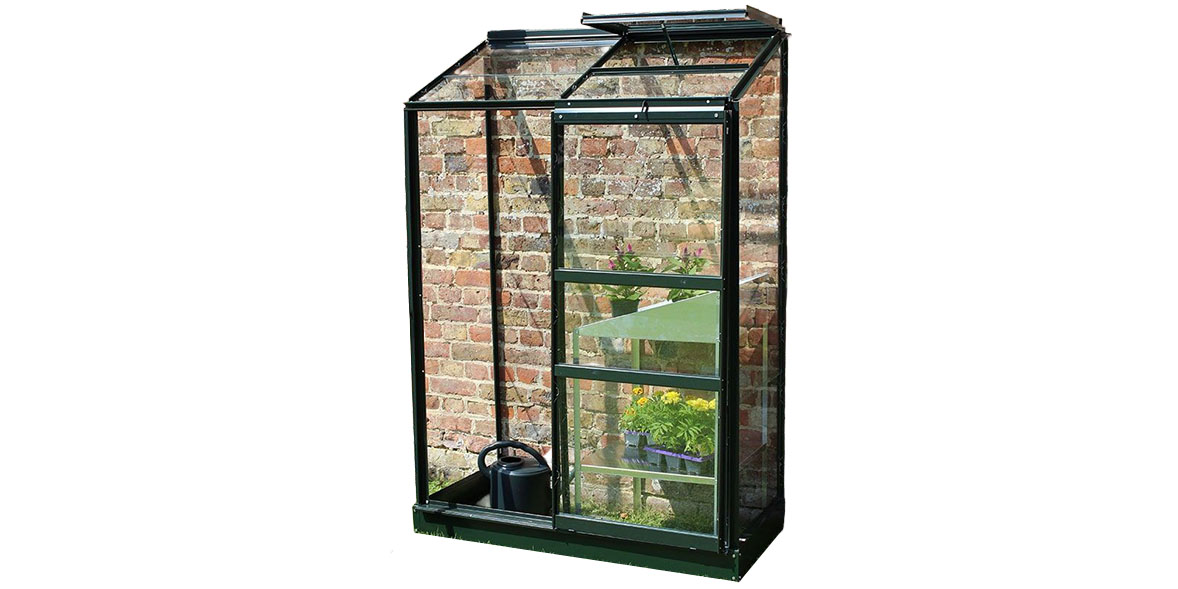
This compact lean-to greenhouse has an aluminium frame which comes with a 12-year guarantee. It features a sliding door and roof vent, and the panels are made from horticultural glass.
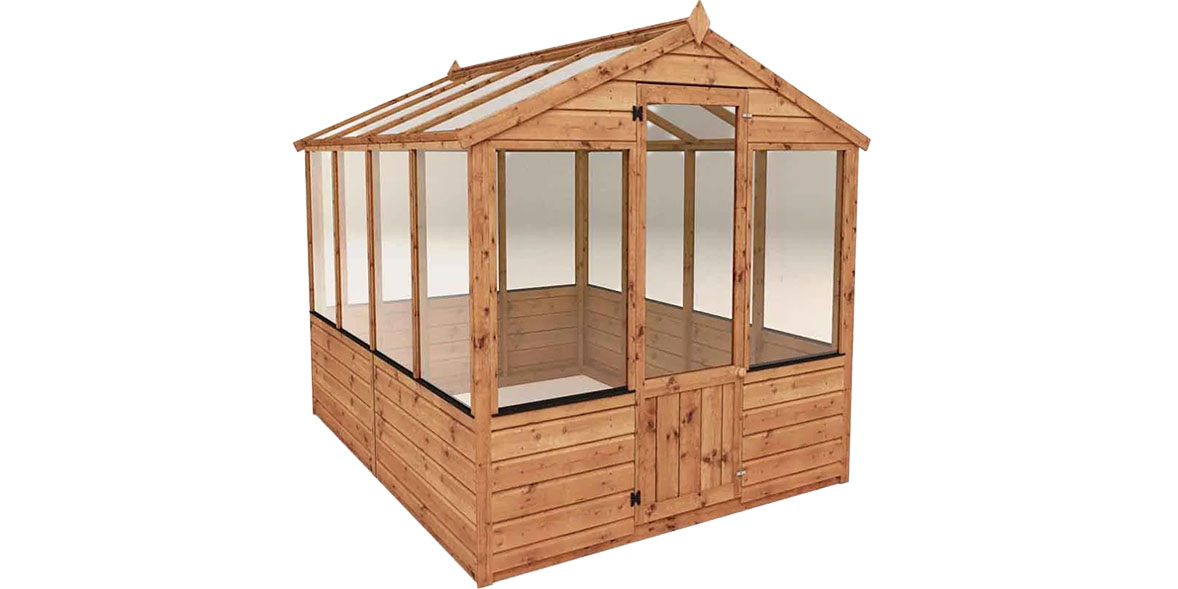
A traditional-style greenhouse, this option has 12mm-thick shiplap cladding and fixed and opening styrene glazed windows. It requires self-assembly and comes with a 10-year anti-rot warranty (annual wood treatment required).
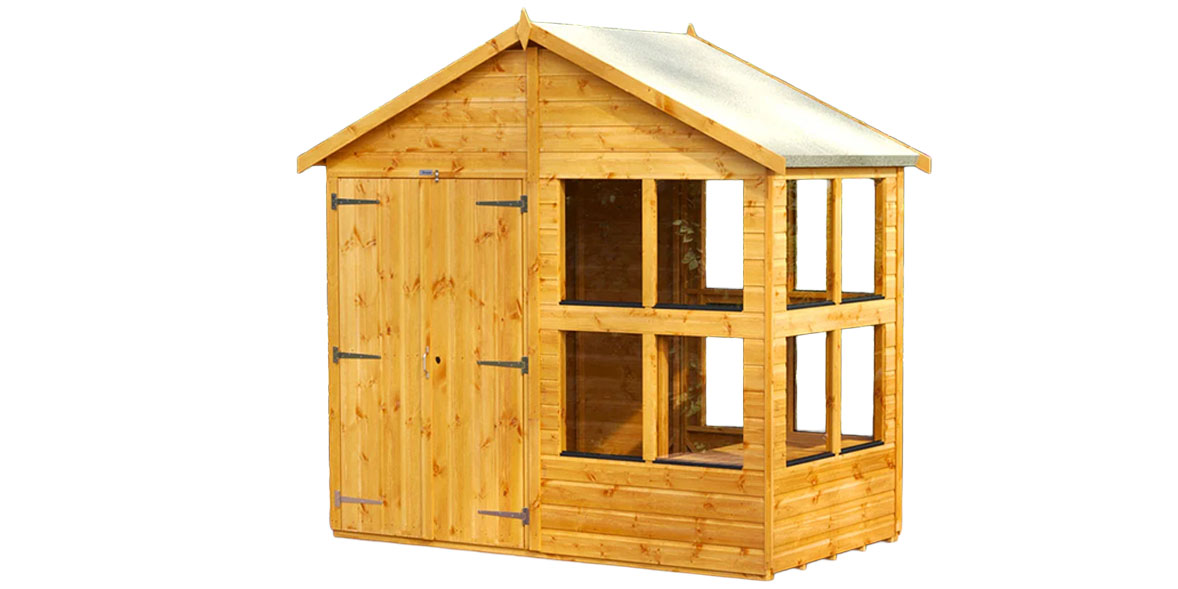
This spacious double-door greenhouse and shed combination allows for storage as well as providing sunlight for plants internally. It has 12mm-thick shiplap cladding throughout and toughened glass windows.

At under £80, this cheap and cheerful mini-greenhouse is a great option if you only need to house a few small plants. It has polycarbonate windows, front-opening double doors and two lift-up roof panels with adjustable heights.
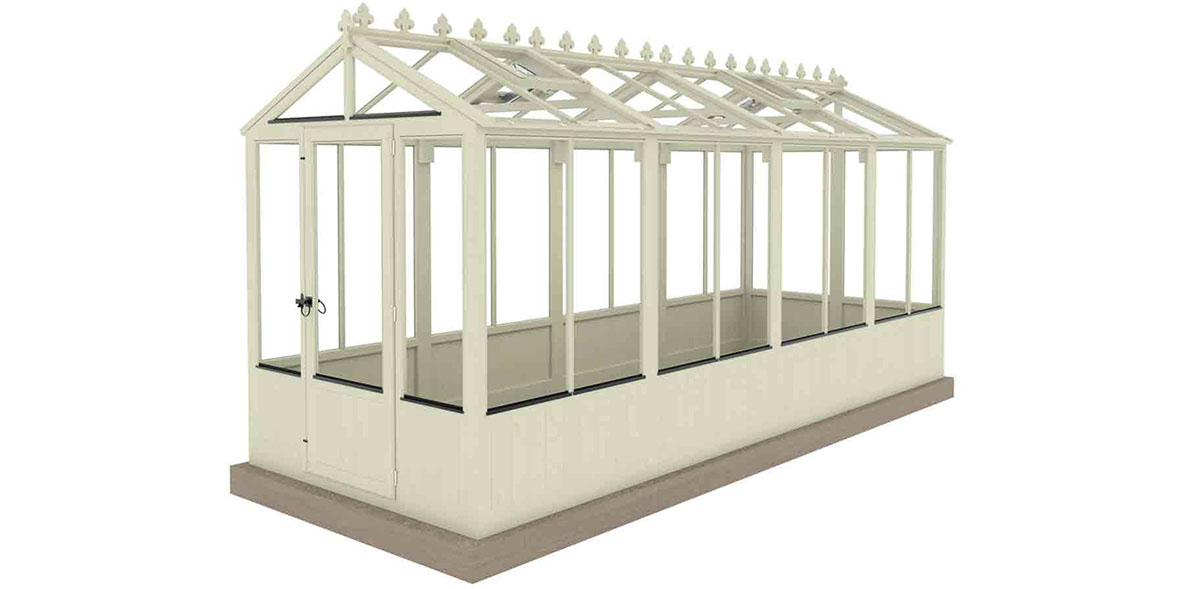
Bringing style as well as space, this greenhouse is ideal for keen gardeners. Features include decorative finial and cresting on the roof and toughened glass windows with an automatic Bayliss opener supplied. It comes with a one-year guarantee.
The size of your greenhouse will be limited to what you can fit in your garden. For most of us it will be fairly modest, especially if you live in a city. Larger structures typically cost more, so even if size isn’t a factor, budget might be.
Your best bet is to opt for the biggest greenhouse you can. Width is an important dimension because this will determine size of the benches and aisles. Below, we've listed some of the most common greenhouse sizes:
Most people opt for a 6 x 8ft (1.8 x 2.4m) or 8 x 10ft (2.4 x 3m) freestanding greenhouse. This is wide enough for a central path, with shelving on one side to hold a propagator and potted plants, and a greenhouse border on the other side, so tall cropping plants such as cucumbers can be planted directly into the soil.
12ft wide (around 3.6m) is a semi-professional width, and anything above this is typical for commercial use.

When settling on a greenhouse size, make sure you can get in and out of the door easily and that you feel comfortable once inside. Note that low greenhouses can feel claustrophobic.
If space is limited, you might want to opt for a mini greenhouse that sits under a window or against a wall.
Fancy upgrading your gardening equipment? Explore our gardening tool reviews.
In practice, there are probably only one or two suitable places in your garden. This will limit the size of greenhouse you opt for – which is why most people end up with a small one.
The greenhouse should be sited where there's plenty of light, but not exposed to high winds. A sheltered spot is good, but avoid placing it under trees.
There needs to be access space around the greenhouse for cleaning, as well as room for acclimatising greenhouse-raised plants to the outside (for example, space for a cold frame).
A heated greenhouse gives more scope for raising a wider range of seeds and cuttings earlier in the season. The nearer the greenhouse is to the house, the more economical it will be to get electricity to it. You must, by law, hire a professional electrician to do this.
Visit Which? Trusted Traders to find a professional near you. You can also use our Trusted Trader search tool below:
Cold frames protect plants from the worst of the winter weather. They’re vital for hardening off plants grown indoors in spring so they're ready to go outside. You can also use them for propagation, such as taking cuttings and sowing seeds, and to extend the growing season.

All the cold frames we tested are listed in alphabetical order below.
Which? members can log in now for the full results and see our recommended suppliers. If you're not a member, join Which? to get instant access.